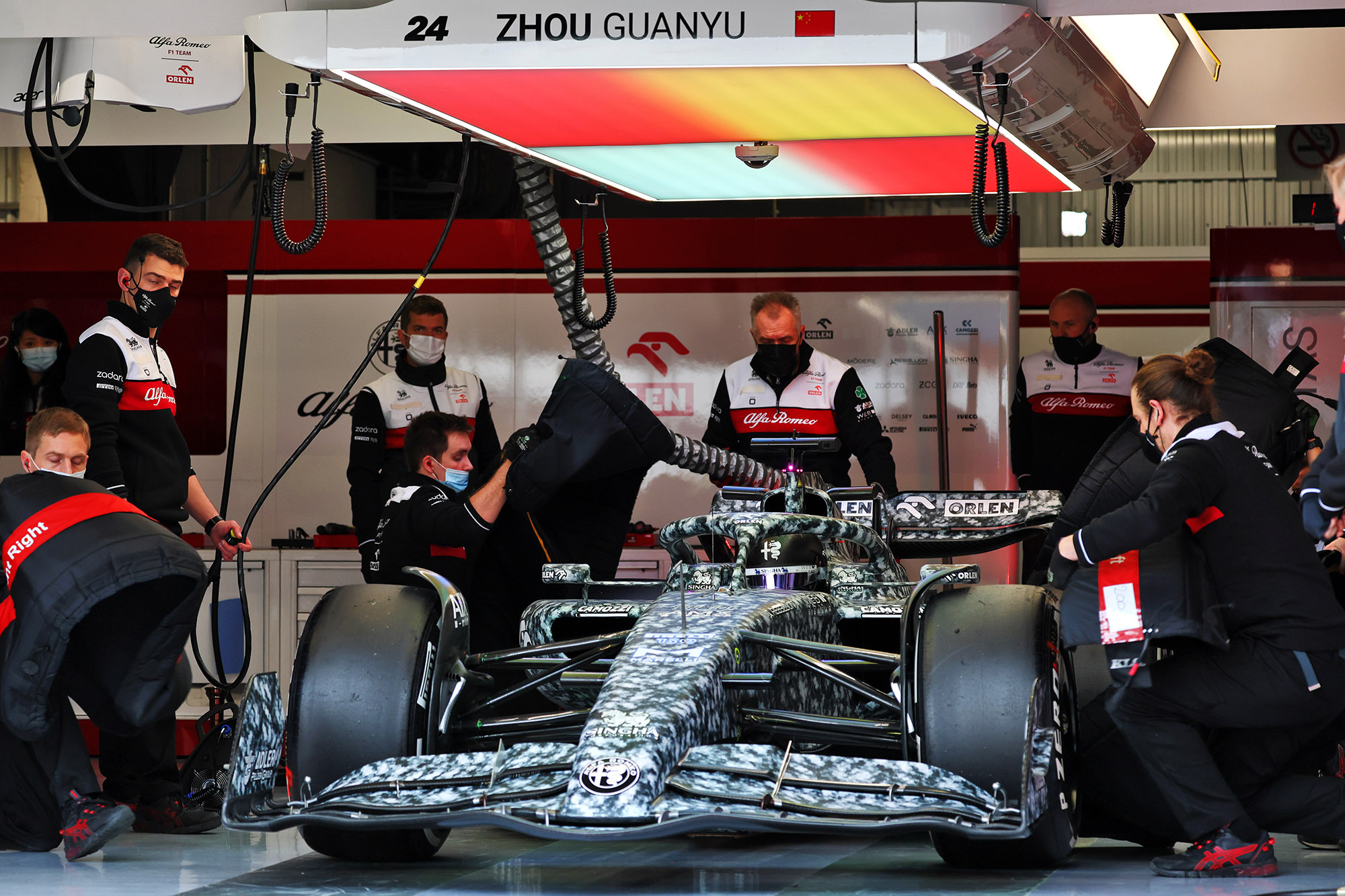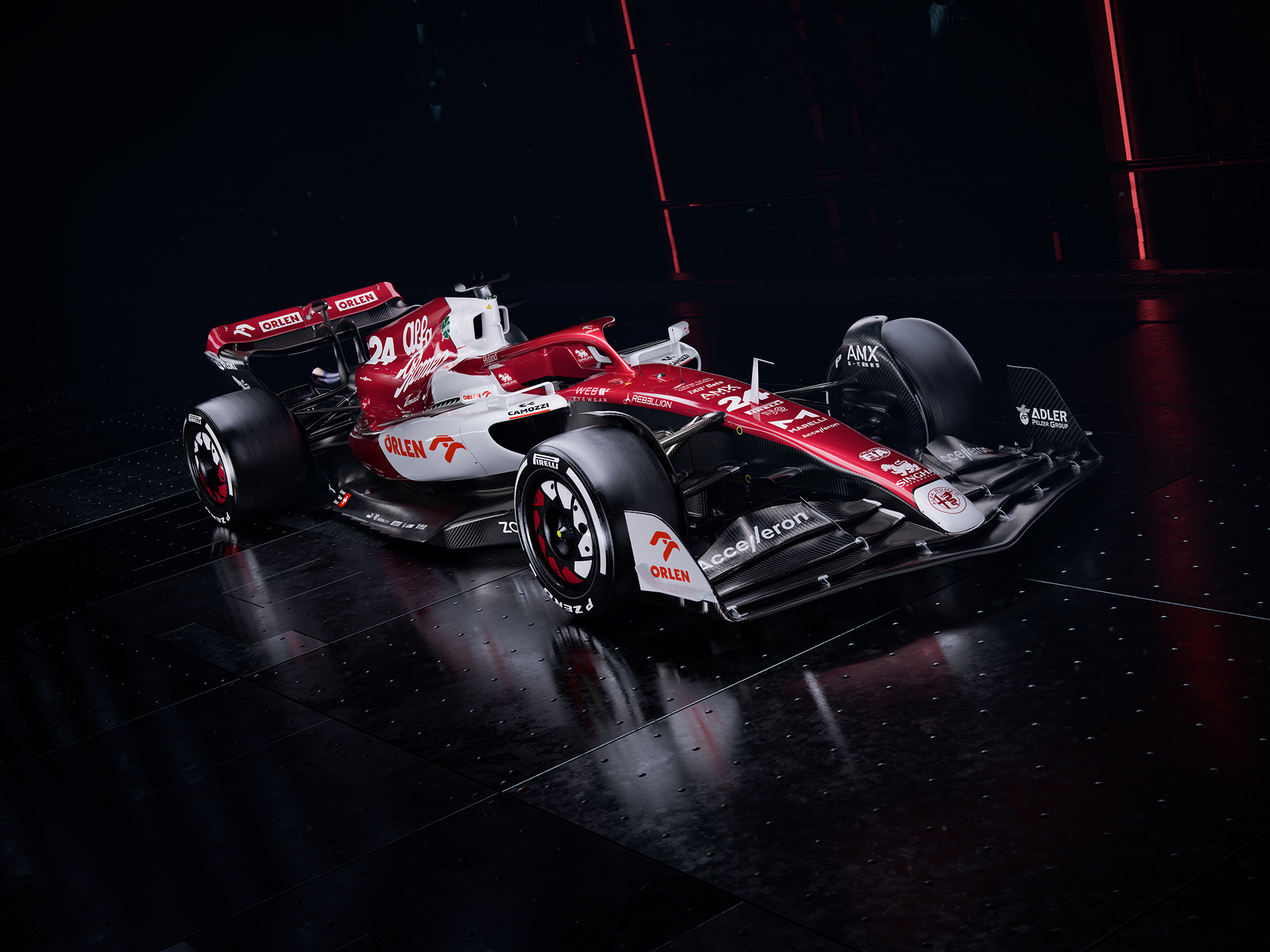Up Next

Alfa Romeo Formula 1 technical director Jan Monchaux expects that running at a higher ride height and floor modifications will be the long-term solution to the problem of porpoising that left the team “taken aback” during the early running of the C42.
The Sauber-run team was one of the teams worst afflicted by the bouncing problems caused by the ground effect aero stalling at high speed on the straights, although this was brought under control with modifications that included running at a higher ride height at the cost of performance.
Monchaux is aiming for a definitive fix to be in place to the problem, which also caused mechanical troubles during the early running of the car at its shakedown and at Barcelona – including a damaged gearbox – for the second pre-season test in Bahrain on 10-12 March.
He admits that despite being aware of the risk of this problem arising, the team did not anticipate it being such a big issue. But this is not unique to Alfa Romeo, with other teams also struggling and Ferrari team principal Mattia Binotto admitting the problem was underestimated.
“To be fully transparent and honest, we didn’t anticipate that,” said Monchaux when asked by The Race if the problem was expected and what the definitive fix will involve.
“We had discussed during the last months about those kind of phenomena that could happen but none of our tools – windtunnel and other simulation tools – were giving a hint of it.
“We were a bit taken aback, which has been the case for probably all of the teams or most of the teams.
“In itself, I would suspect that we are going to get that under control with some modifications mainly on the floor that will allow us to get a bit closer to our optimum [ride height] but with the current state of the rules I would also expect that we would have to settle slightly higher than we all thought at the beginning.
“So the question would be how much higher? Is it 3-5mm or or is it 20mm? I hope it will be 5mm because the rework on the car will be less, but we will see.
“We can have a chat in a month’s time or so and then I will be able to give you a better, more precise, answer.”
The new-for-2022 ground effect F1 cars run as close to the ground as possible to ensure the underfloor is sealed to maximise the low pressure underneath the car and therefore the downforce.
But if the underfloor aero stalls, this leads to a loss of downforce, the car rising and then dropping as the aero works again as intended. This process repeated causes the bouncing effect.
Alfa Romeo got the problem fully under control with some new parts that arrived in time to be run on the second day, although by then it had cost it track time.

Subsequent mechanical problems on day three, which ultimately meant Alfa Romeo completed fewer laps than every team except Haas, were unrelated to the bouncing.
“The bouncing topic, which is the topic of the week, has been causing issues mainly during day one and the start of day two,” said Monchaux when asked by The Race about the relationship between the porpoising and mechanical problems.
“After the fixes we had in place proved to be adequate so that was ticking the box.
“What happened on day three has effectively nothing to do with the bouncing, it’s some small mechanical issues which hampered us from having a trouble free day.
“Evidently, we found a way around the bouncing during that first week which required some compromise because effectively you had to move a bit away from the optimum where you would like to have the car so if you move away from the optimum you are giving [up] performance.
“I think it’s more or less the same for all the teams and we are working very hard to find ways to have that bouncing topic under control but more importantly to move back closer to what is the optimum of the car.
“I’m reasonably confident we will get there very soon and hopefully already at the beginning of test two.”
Team principal Frederic Vasseur is optimistic that Alfa Romeo can “fix everything for Bahrain”.
This process will be helped by it completing a filming day in Barcelona today ahead of the second pre-season test.
“It’s not a secret that we had some bouncing issues at the beginning and it was true for everybody,” said Vasseur.
“We had some mechanical issues on the second part of the test but we have to fix it. It’s a challenge but I’m quite confident that we will be able to do it for next week.
“We have the TV day today. We will put the car back on track today but for Bahrain I think we will be on the right way.

“We spoke about bouncing but it’s always the case with new regulations that you have new issues coming in and I think in two or three races nobody will speak again about bouncing but we will have another issue or topic to discuss.
“But we have to fix it and we saw that on our side and for the other teams have already made a big improvement over the first three days and we will come back next week all the teams with new configurations to fix it completely.”
Monchaux is confident the mechanical problems will be resolved soon but that the loss of mileage at Barcelona was a setback.
He suggested that it was partly a consequence of the team having to go “very extreme” in some aspects of the design given the difficulty faced by all teams in getting down to the minimum mass, which has risen to 795kg this year.
“In the past we have been usually very good in reliability,” said Monchaux. “For this new car we had to go very extreme on some design features, essentially because of the weight impact.
“So yes we have a few issues to solve but I’m relatively confident we’ll be on top of them and the mechanical issues which hampered us on day three.
“To some extent, I prefer they happen now than during the season so usually when we have those issues we fix them once and for all. That’s why we go testing.
“We would have liked more mileage, but we can’t change that. We need to go home now tonight and have a week and a half to fix quite a few things and then hopefully test two will be smoother for all of us.
“But I’m generally confident.”






